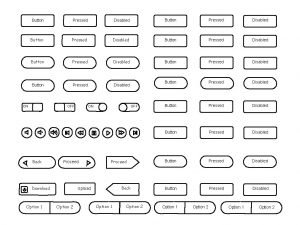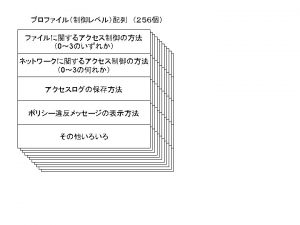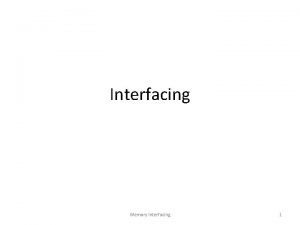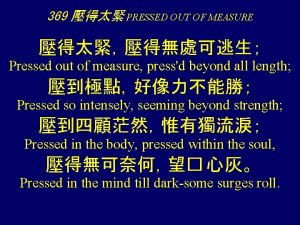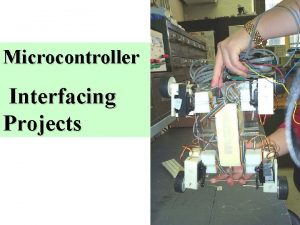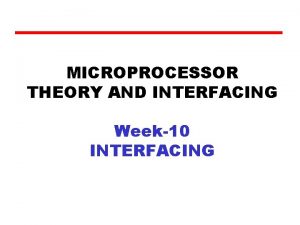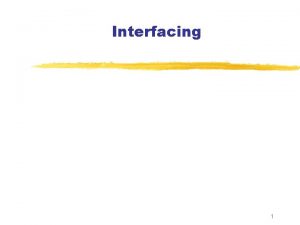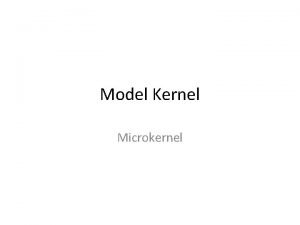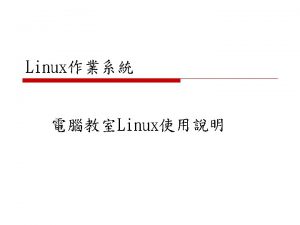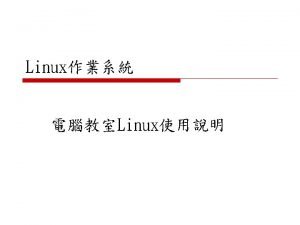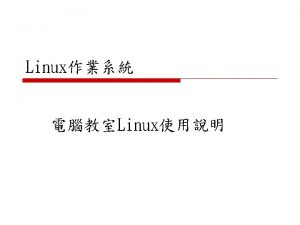Interfacing Key pressed Kernel get it Signal translated















- Slides: 15

Interfacing

Key pressed Kernel get it Signal translated to ASCII Message sent to window and to Caret

Cursor vs Caret • Cursor – graphical image to indicate position • Caret – flashing object for text input

Keys messages • WM_KEYDOWN LPARAM bits Meaning 0 -15 Times a key was pressed 16 -23 Key code 29 Context code 30 Previous key state 31 Transition state • WM_KEYUP

Caret • System provides one caret per message queue (read more about message queue) • Window creates a caret only when it has the keyboard focus or is active • Only one active caret at the moment! – WM_SETFOCUS – WM_KILLFOCUS

Cursor (mouse) Mouse can send a lot of messages. In addition LPARAM and WPARAM variables stores additional information.

Mouse messages (standart) • • • WM_LBUTTONDBLCLK WM_LBUTTONDPWN WM_LBUTTONUP WM_MBUTTONDOWN WM_MBUTTONUP WM_MOUSEMOVE WM_MOUSEWHEEL WM_RBUTTONDOWN WM_BUTTONUP

LPARAM stores information about X-Y coordinates, and WPARAM – SHIFT and CTRL state. System provides support for mouse tracking, but program can interfere into mouse movement or messages sent.

Timer • Used to interrupt program’s workflow – Message queue • Though timer isn’t input device, but it can send input messages to window, thus it can be considered as one. • Native timer’s time function isn’t accurate enough to use with games or time response (Direct. X API)

How to use? • Set. Timer – create a timer • Kill. Timer – destroys a timer • WM_TIMER – message sent to window after the set time is run out


Two ways. . . • It is possible to process WM_TIMER message inside window procedure • It is possible to define feedback function Timer. Proc to process message


Timer. Proc

Timer message(s) • Timer sends only one message – WM_TIMER • Variable WPARAM keeps timers ID
 Get in get on get off get out
Get in get on get off get out Idioms in one thing by one direction
Idioms in one thing by one direction Baseband signal and bandpass signal
Baseband signal and bandpass signal Baseband signal and bandpass signal
Baseband signal and bandpass signal Digital signal as a composite analog signal
Digital signal as a composite analog signal The product of two odd signals is:
The product of two odd signals is: Sectional steel reservoirs
Sectional steel reservoirs Though we are hard pressed
Though we are hard pressed Pressed cookies examples
Pressed cookies examples One-verse evangelism
One-verse evangelism Used to pick up or hold hot objects
Used to pick up or hold hot objects Pressed fiber pad chemistry
Pressed fiber pad chemistry Pressed fiber pad
Pressed fiber pad Moving and holding a hot beaker
Moving and holding a hot beaker Get up get moving quiz
Get up get moving quiz Get up get moving quiz
Get up get moving quiz
















